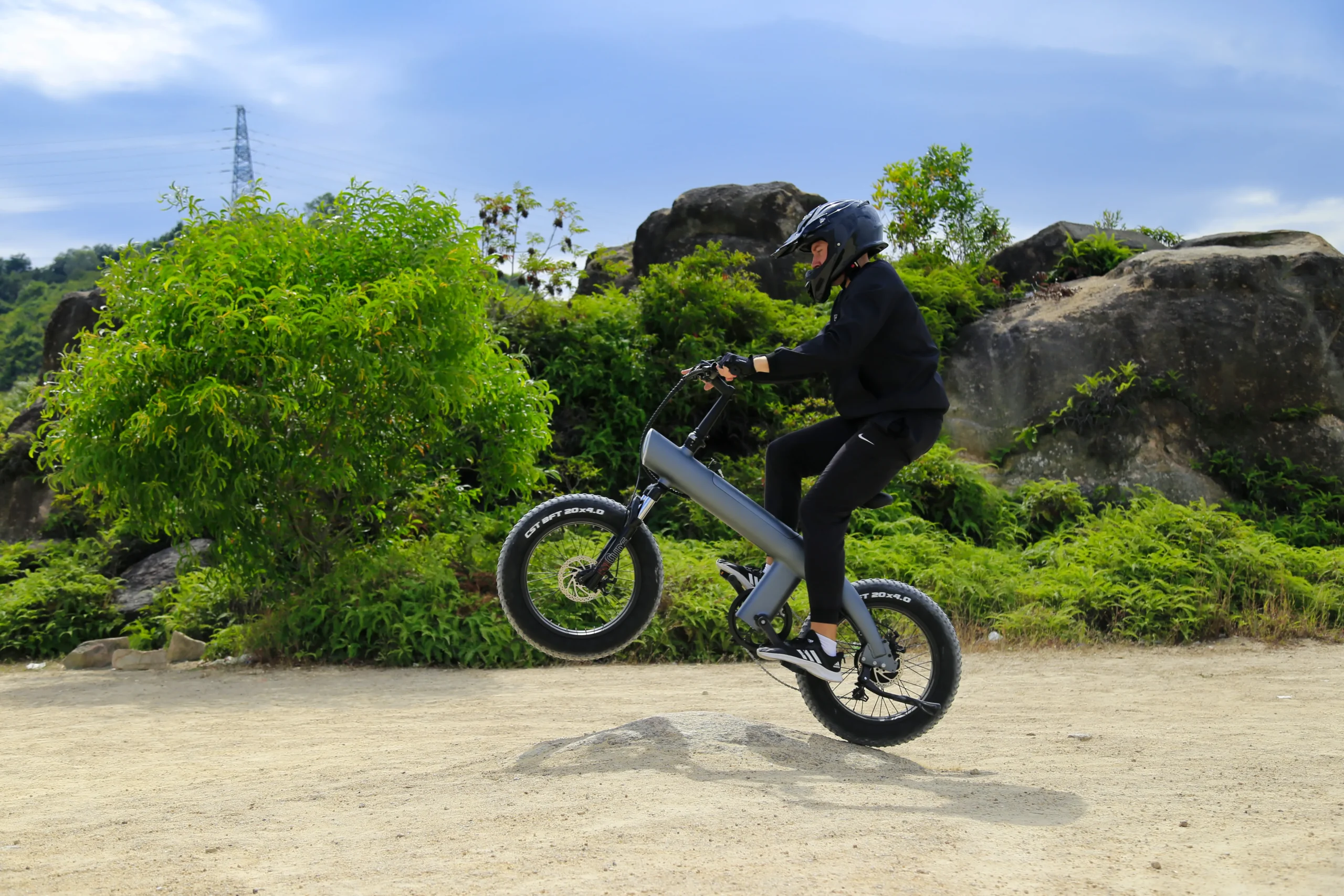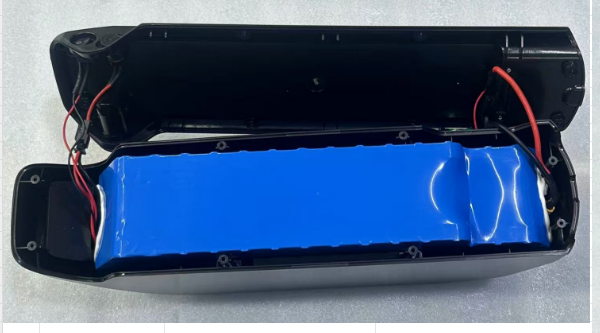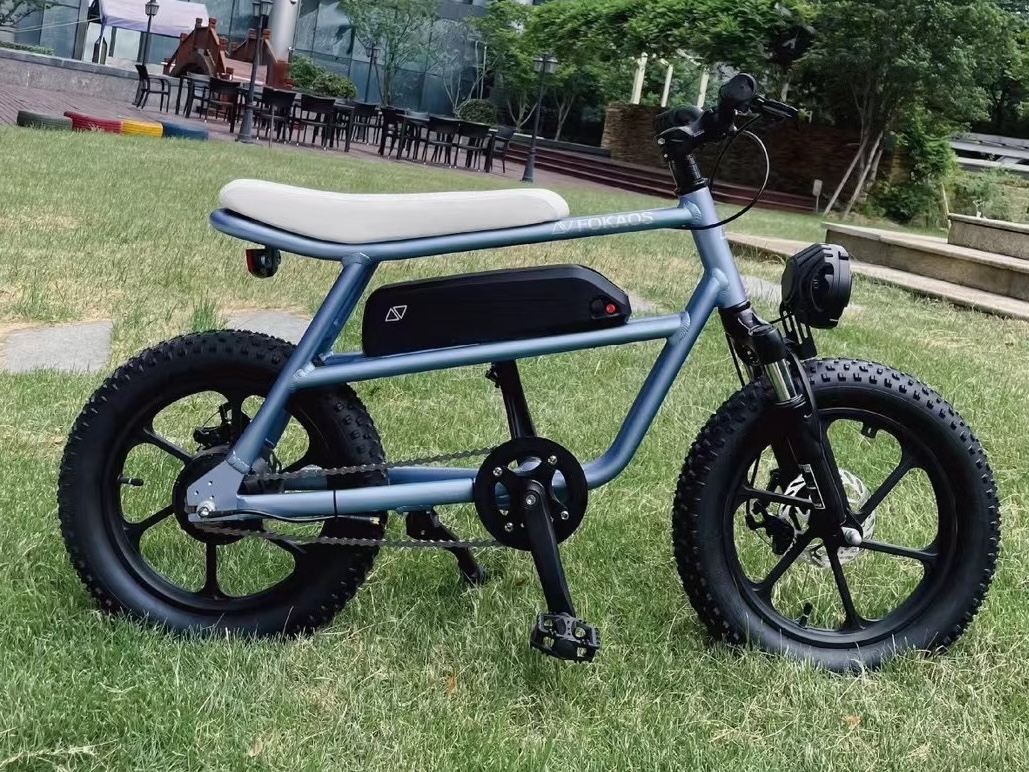Are you in the market for an electric bike and wondering which battery type is right for you? In this article, we’ll dive deep into the comparison of 21700 and 18650 batteries, providing you with all the information you need to make an informed decision. Get ready to explore the differences, advantages, and considerations of each battery type, so you can choose the perfect power source for your electric bike.


What are 18650 batteries?
18650 batteries are a type of lithium-ion battery that measures 18mm in diameter and 65mm in length. They’re commonly used in electronic devices such as laptops, power tools, and electric bikes. 18650 batteries have been around since the 1990s and have become a popular choice due to their small size, high energy density, and long lifespan.
What are 21700 batteries?
21700 batteries are a newer type of lithium-ion battery that measures 21mm in diameter and 70mm in length. They were first introduced in 2015 and are quickly gaining popularity as a replacement for 18650 batteries. 21700 batteries have a higher energy density than 18650 batteries, which means they can store more energy in the same amount of space. They’re commonly used in electric vehicles, power tools, and other high-performance applications.
When comparing 21700 and 18650 batteries for electric bikes, there are several key factors to consider. Let’s take a closer look:
- Energy Capacity:
- 21700: With a larger form factor, 21700 batteries typically offer higher energy capacity compared to 18650 batteries. This means longer rides and increased range.
- 18650: While smaller in size, 18650 batteries still provide sufficient energy capacity for most electric bikes. They are commonly used and widely available in the market.
- Power Output:
- 21700: Due to their larger size, 21700 batteries often offer higher power output. This results in better acceleration and performance, especially in demanding riding conditions.
- 18650: Although smaller, 18650 batteries can still deliver adequate power for most electric bikes, providing a smooth riding experience.
- Weight and Size:
- 21700: Being larger, 21700 batteries are generally heavier and may contribute to a slightly bulkier electric bike frame. However, advancements in battery technology have minimized the weight difference.
- 18650: These batteries are smaller and lighter compared to 21700 batteries. They are a popular choice for compact electric bike designs.
By understanding the differences between 21700 and 18650 batteries, you’ll be equipped to make an informed decision for your electric bike. Let’s explore further to learn more about the specific aspects of each battery type.
Energy Density and Range
- Detailed comparison of the energy density of 21700 and 18650 batteries
- Impact of energy density on the range of an electric bike
The energy density of a battery refers to the amount of energy it can store per unit of volume or weight. In the case of electric bikes, it directly affects the range you can achieve on a single charge. Generally, 21700 batteries have a higher energy density compared to 18650 batteries. This means that they can store more energy in the same amount of space. The higher energy density of 21700 batteries is mainly due to their larger size and improved design. 18650 usually has 2000mah-3500mah, while 21700 has 4000mah-5000mah, means that 40% more than 18650.
The larger diameter and length of 21700 batteries allow for the use of more active materials, which increases the overall energy capacity. Additionally, advancements in battery chemistry and manufacturing processes have contributed to improving the energy density of 21700 batteries.
The higher energy density of 21700 batteries translates to longer battery life and increased range for your electric bike. With a higher energy density, you can travel further on a single charge, making them a popular choice for electric bike enthusiasts who prioritize longer rides and extended battery life.
While 21700 batteries offer higher energy density, 18650 batteries still have a respectable energy density and have been widely used in various applications for many years. They have proven to be reliable and have a good balance between energy capacity and size.
18650 batteries have a slightly lower energy density compared to 21700 batteries due to their smaller size. However, they still offer sufficient power and performance for most electric bike applications. Many electric bike manufacturers have successfully utilized 18650 batteries to provide a good balance of performance, weight, and cost.
It’s worth noting that advancements in battery technology are continually being made, and newer versions of 18650 batteries with improved energy densities are being developed. These improved versions can offer comparable performance to some extent, but they may still fall slightly behind 21700 batteries in terms of overall energy density.
Power Output
Due to their larger size, 21700 batteries often offer higher power output compared to 18650 batteries. The larger size allows for more battery cells to be packed into the battery pack, resulting in increased power capacity. This higher power output translates into better acceleration and overall performance, especially in demanding riding conditions.
With the ability to deliver more power to the electric motor, 21700 batteries can provide a greater torque output, enabling faster acceleration and better climbing capabilities. This is particularly beneficial for riders who frequently encounter hilly terrains or require quick bursts of power, such as during off-road or sport riding.
The higher power output of 21700 batteries also allows for better performance in situations where the electric bike may be carrying heavier loads, such as when transporting cargo or riding with a passenger. The extra power ensures a smoother and more responsive ride, maintaining consistent performance even with increased weight.
Although smaller in size, 18650 batteries still offer adequate power output for most electric bikes. They are capable of delivering a sufficient amount of power to the electric motor, ensuring a smooth riding experience in various conditions. While they may not provide the same level of power as 21700 batteries, they can still meet the needs of many electric bike riders.
For casual riders or those who primarily use their electric bike for commuting or leisurely rides on flat or moderately inclined surfaces, the power output of 18650 batteries is typically more than enough. These batteries can provide a comfortable and enjoyable riding experience without the need for excessive power.
It’s important to note that the power output of an electric bike is not solely determined by the battery type but is also influenced by factors such as the motor’s power rating, controller efficiency, and overall system design. The battery type is just one aspect that contributes to the overall power and performance of an electric bike.
In summary, while 21700 batteries offer higher power output due to their larger size, 18650 batteries can still deliver adequate power for most electric bikes, providing a smooth riding experience. The choice between the two battery types depends on your specific riding needs, such as the terrain you frequently encounter and your desired level of performance.
Charging Time and Efficiency
- Comparison of charging time between 21700 and 18650 batteries
- Efficiency considerations when charging electric bike batteries
Charging time is a crucial aspect to consider when it comes to electric bike batteries. While both 21700 and 18650 batteries can be charged efficiently, there are some differences to be aware of. Due to their larger size and higher energy capacity, 21700 batteries may require slightly longer charging times compared to 18650 batteries. However, advancements in charging technology and the availability of fast-charging options have significantly reduced the gap. It’s essential to follow the manufacturer’s guidelines for charging to ensure optimal battery performance and longevity.
In addition to energy density and charging time, there are other factors to consider when comparing 21700 and 18650 batteries for electric bikes. Let’s delve deeper into these aspects to provide you with a comprehensive understanding.
Battery Lifespan and Durability
- Comparison of the lifespan and durability of 21700 and 18650 batteries
- Factors that affect the longevity of electric bike batteries
The lifespan of a battery refers to how long it can provide reliable performance before its capacity significantly decreases. When it comes to lifespan, both 21700 and 18650 batteries can offer excellent durability, but there are some factors to consider.
18650 batteries have been on the market for a longer time, and their lifespan has been well-studied and proven. On average, high-quality 18650 batteries can last for around 300 to 500 charge cycles. A charge cycle is defined as using the battery from 100% to 0% and then fully charging it back to 100%.
21700 batteries, being a newer technology, may not have as much historical data on their lifespan. However, they are generally expected to have a similar or even longer lifespan compared to 18650 batteries. With advancements in battery technology and manufacturing processes, 21700 batteries are designed to have improved durability and longevity.
It’s important to note that the lifespan of a battery can also depend on various factors such as discharge rates, charging methods, operating temperatures, and overall battery management. Proper care and maintenance, such as avoiding overcharging or deep discharging, can help extend the lifespan of both 21700 and 18650 batteries.
Durability
Durability refers to a battery’s ability to withstand physical stress, including impacts, vibrations, and temperature fluctuations, without compromising its performance or safety.
Both 21700 and 18650 batteries are designed to be robust and withstand everyday usage conditions. They are built with protective casing and safety mechanisms to prevent damage or hazards. However, 21700 batteries may have a slight advantage in terms of durability due to their larger size and enhanced structural design.
The larger form factor of 21700 batteries allows for thicker electrode layers and improved heat dissipation. This can result in better resistance against heat buildup during high-demand applications, reducing the risk of thermal issues and potential damage to the battery.
Moreover, 21700 batteries often have a higher discharge rate capability, which means they can deliver more power without experiencing performance degradation or excessive heating. This can make them more suitable for applications that require sustained high power, such as electric bikes.
Overall, both 21700 and 18650 batteries are durable and can withstand normal usage conditions. However, the larger size and potential performance enhancements of 21700 batteries may provide a slight edge in terms of durability, especially in demanding applications like electric bikes.
If you want to dive deeper into the topic of battery lifespan and durability, here are some additional resources:
- Battery University: How to Prolong Lithium-based Batteries
- Electric Bike Battery Guide: Lifespan, Maintenance, and Tips
- The Best Batteries for Electric Bikes
- Testing the Durability of 21700 Batteries (example video)
Cost
- Availability and market accessibility of 21700 and 18650 batteries
- Cost considerations when choosing a battery for your electric bike
Both 21700 and 18650 batteries are widely available in the market, thanks to their extensive use in various industries, including electric vehicles. However, it’s worth noting that the availability of specific battery models or brands may vary depending on your location. It is recommended to check with local suppliers or reputable online retailers to ensure you have access to the battery type you choose for your electric bike.
In terms of cost, 18650 batteries are generally more affordable compared to 21700 batteries. This price difference can be attributed to the larger size and higher energy capacity of 21700 batteries. However, the cost of batteries can vary depending on the brand, quality, and specific specifications. It’s important to consider your budget and the overall value the battery provides in terms of performance and longevity.
Conclusion:
In conclusion, the choice between 21700 and 18650 batteries for your electric bike depends on various factors such as energy capacity, power output, weight, charging time, and cost. While 21700 batteries offer higher energy density and power output, they come at a slightly higher cost and may contribute to a slightly heavier electric bike frame. On the other hand, 18650 batteries are more compact, affordable, and widely available. By considering your specific requirements and preferences, you can make an informed decision that aligns with your electric bike needs.
Remember, when selecting a battery, it’s important to choose a reputable brand and ensure compatibility with your electric bike’s specifications. Regular maintenance, proper charging practices, and responsible use will help you optimize the performance and lifespan of your chosen battery, ensuring a smooth and enjoyable riding experience.





中.jpeg)
